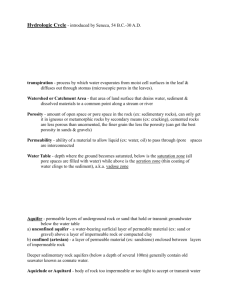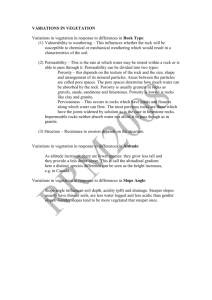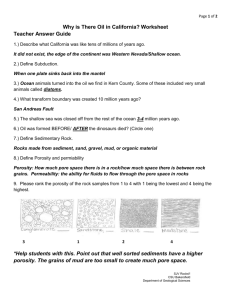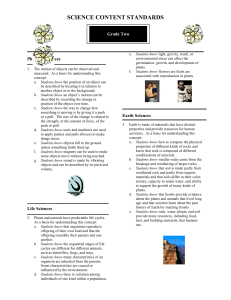Fractures Crystalline rock Unconsolidated deposit Perched water table
advertisement
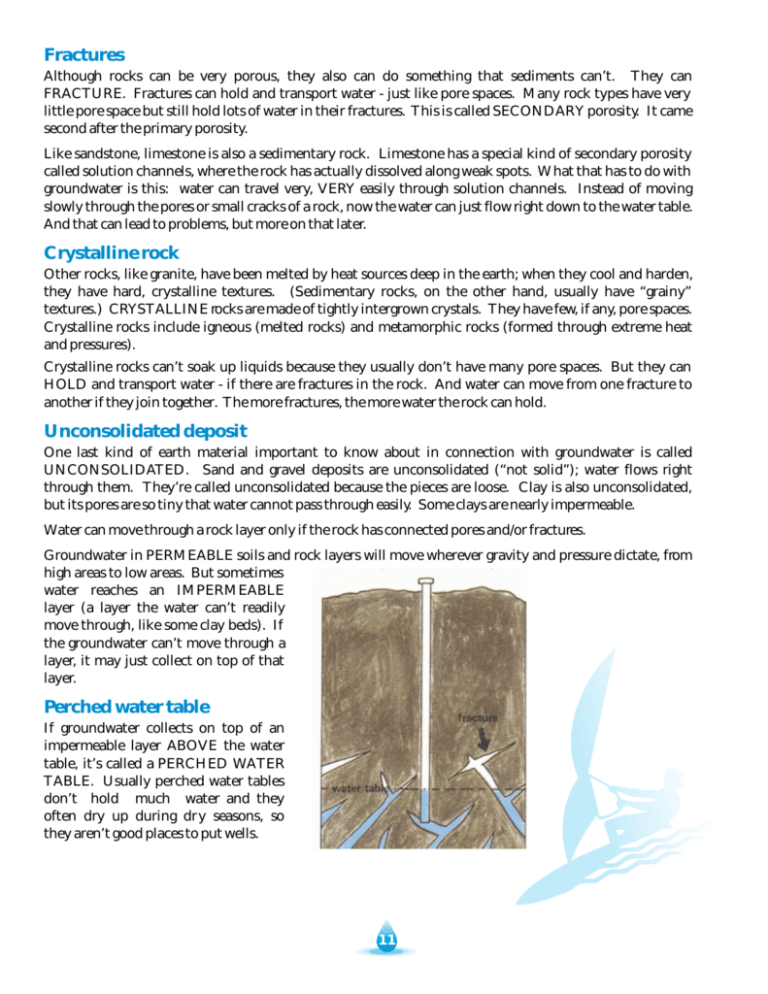
Fractures Although rocks can be very porous, they also can do something that sediments can’t. They can FRACTURE. Fractures can hold and transport water - just like pore spaces. Many rock types have very little pore space but still hold lots of water in their fractures. This is called SECONDARY porosity. It came second after the primary porosity. Like sandstone, limestone is also a sedimentary rock. Limestone has a special kind of secondary porosity called solution channels, where the rock has actually dissolved along weak spots. What that has to do with groundwater is this: water can travel very, VERY easily through solution channels. Instead of moving slowly through the pores or small cracks of a rock, now the water can just flow right down to the water table. And that can lead to problems, but more on that later. Crystalline rock Other rocks, like granite, have been melted by heat sources deep in the earth; when they cool and harden, they have hard, crystalline textures. (Sedimentary rocks, on the other hand, usually have “grainy” textures.) CRYSTALLINE rocks are made of tightly intergrown crystals. They have few, if any, pore spaces. Crystalline rocks include igneous (melted rocks) and metamorphic rocks (formed through extreme heat and pressures). Crystalline rocks can’t soak up liquids because they usually don’t have many pore spaces. But they can HOLD and transport water - if there are fractures in the rock. And water can move from one fracture to another if they join together. The more fractures, the more water the rock can hold. Unconsolidated deposit One last kind of earth material important to know about in connection with groundwater is called UNCONSOLIDATED. Sand and gravel deposits are unconsolidated (“not solid”); water flows right through them. They’re called unconsolidated because the pieces are loose. Clay is also unconsolidated, but its pores are so tiny that water cannot pass through easily. Some clays are nearly impermeable. Water can move through a rock layer only if the rock has connected pores and/or fractures. Groundwater in PERMEABLE soils and rock layers will move wherever gravity and pressure dictate, from high areas to low areas. But sometimes water reaches an IMPERMEABLE layer (a layer the water can’t readily move through, like some clay beds). If the groundwater can’t move through a layer, it may just collect on top of that layer. Perched water table If groundwater collects on top of an impermeable layer ABOVE the water table, it’s called a PERCHED WATER TABLE. Usually perched water tables don’t hold much water and they often dry up during dr y seasons, so they aren’t good places to put wells. 11
